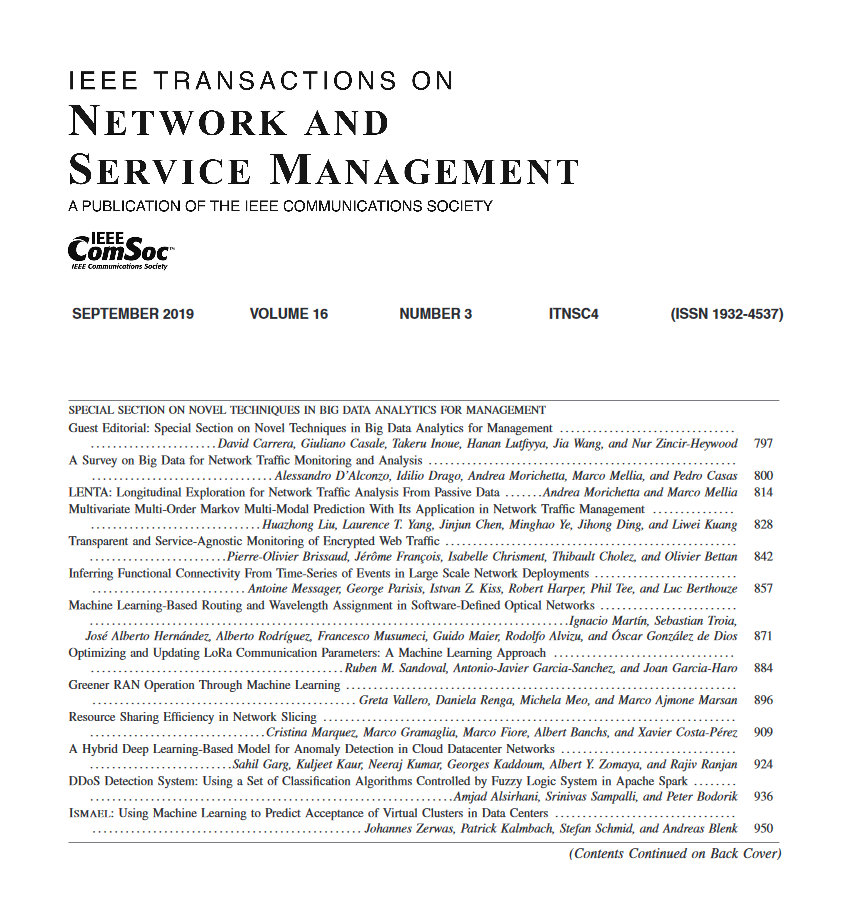CRP: A Cluster-Based Routing Protocol for Lightweight Nodes in Payment Channel Networks
IF 5.4
2区 计算机科学
Q1 COMPUTER SCIENCE, INFORMATION SYSTEMS
IEEE Transactions on Network and Service Management
Pub Date : 2025-03-26
DOI:10.1109/TNSM.2025.3555174
引用次数: 0
Abstract
Although blockchain empowers the IoT trading market and presents new development opportunities for IoT, scalability issues of blockchain limit its application in this area. Payment Channel Networks (PCNs) have emerged as a promising solution to address the scalability issues. With the help of routing protocols, two users can utilize payment channels to conduct off-chain transactions. However, most Payment Channel Network (PCN) routing protocols overlook the scalability of PCNs, resulting in substantial storage, communication, and computational overhead for lightweight nodes, such as IoT devices. Additionally, frequent utilization of a payment channel can quickly exhaust the channel’s balance, leading to congestion and causing subsequent payments to fail. Channel congestion restricts the throughput of PCNs, yet most PCN routing protocols lack designs for channel congestion control. In this paper, we propose a Cluster-based scalable and high-throughput Routing Protocol (CRP), to enhance the scalability and throughput of PCNs. CRP organizes PCNs into clusters to reduce the average routing table size, thereby alleviating users’ storage, communication, and computational overhead. Furthermore, CRP aims to minimize maximum channel congestion when selecting payment routes, thereby improving throughput. Extensive simulations demonstrate that CRP achieves high scalability and throughput compared to state-of-the-art PCN routing protocols.CRP:支付通道网络中基于集群的轻量级节点路由协议
虽然区块链赋能了物联网交易市场,为物联网提供了新的发展机会,但区块链的可扩展性问题限制了其在该领域的应用。支付通道网络(pcn)已成为解决可伸缩性问题的一个有前途的解决方案。在路由协议的帮助下,两个用户可以利用支付通道进行链下交易。然而,大多数支付通道网络(PCN)路由协议忽略了PCN的可扩展性,导致轻量级节点(如物联网设备)的大量存储、通信和计算开销。此外,频繁使用支付通道会迅速耗尽通道的余额,导致拥塞并导致后续支付失败。信道拥塞限制了PCN的吞吐量,但大多数PCN路由协议缺乏信道拥塞控制的设计。为了提高pcn的可扩展性和吞吐量,本文提出了一种基于集群的可扩展高吞吐量路由协议(CRP)。CRP将pcn组织成集群,以减少平均路由表的大小,从而减轻用户的存储、通信和计算开销。此外,在选择支付路径时,CRP旨在最大限度地减少通道拥塞,从而提高吞吐量。大量的仿真表明,与最先进的PCN路由协议相比,CRP实现了高可扩展性和吞吐量。
本文章由计算机程序翻译,如有差异,请以英文原文为准。
求助全文
约1分钟内获得全文
求助全文
来源期刊

IEEE Transactions on Network and Service Management
Computer Science-Computer Networks and Communications
CiteScore
9.30
自引率
15.10%
发文量
325
期刊介绍:
IEEE Transactions on Network and Service Management will publish (online only) peerreviewed archival quality papers that advance the state-of-the-art and practical applications of network and service management. Theoretical research contributions (presenting new concepts and techniques) and applied contributions (reporting on experiences and experiments with actual systems) will be encouraged. These transactions will focus on the key technical issues related to: Management Models, Architectures and Frameworks; Service Provisioning, Reliability and Quality Assurance; Management Functions; Enabling Technologies; Information and Communication Models; Policies; Applications and Case Studies; Emerging Technologies and Standards.
 求助内容:
求助内容: 应助结果提醒方式:
应助结果提醒方式:


